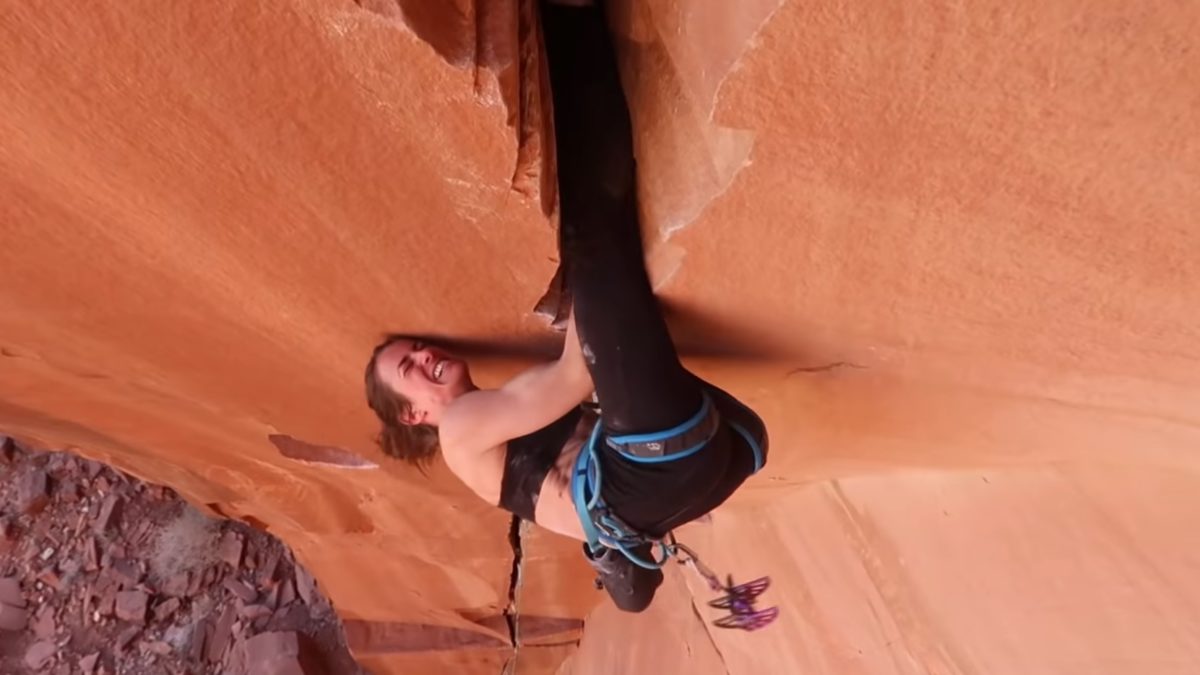Onsight and Flash – What Do They Mean?
In this two-part series, we break down what defines an onsight, flash, redpoint, pinkpoint, and headpoint
 Photo by: Pete Whittaker of Mari Augusta Salvesen flashing Belly Full of Bad Berries 5.13
Photo by: Pete Whittaker of Mari Augusta Salvesen flashing Belly Full of Bad Berries 5.13
While top-roping can be good fun, the goal of sport and trad climbing is to successfully send a climb. By send, I mean leading the route from bottom to top without falls, takes, or pulling on gear. This sounds straightforward, but there are quite a few different approaches or styles to achieving a send. You’ve likely heard of these—onsight, flash, redpoint, pinkpoint, headpoint—but it’s also understandable to be a little unclear about what’s exactly involved in each one, especially if you’re a newer climber.
To clear up any confusion, let’s go through each of these send types one by one. Today, in Part 1, we tackle onsighting and flashing. In Part 2, we cover redpointing, pinkpointing, and headpointing.
Onsight
Onsighting is arguably one of the most satisfying styles of roped climbing. A climber achieves an onsight when they send a route in their first attempt with no prior knowledge about the climb. What exactly qualifies as “no prior knowledge” however, can be tricky. Most climbers agree that the following disqualify the onsight:
- Watching someone climb the route
- Watching a video of someone climbing the route
- Receiving beta for any part of the route
- Previously climbing portions of the route (like when the route shares a section with another route you’ve already climbed)
- Sussing out the route by inspecting or touching holds (such as when lowering from another route, rappelling, or jugging up a fixed line)
Value judgements must be made about whether an onsight may have be violated by other factors. Examples could include overly detailed guidebook route descriptions (e.g. “Watch out for the crux at the fifth bolt, and don’t forget to kneebar!), or guidebook photos depicting the crux sequence. And then there’s tick marks. We’ve all lunged for holds we otherwise wouldn’t have had they not been covered in bright, chalky dashes.
Some climbers argue there are even more stipulations. These purists believe that for a true onsight, there must be no gear on the wall, including permadraws, quickdraws, or even bolts, as these indicate the direction of the route. There must also be no chalk stains on the wall as these may inform the climber about the climbing sequence. The climber must also not know the route’s grade as this provides information about the difficulty of the moves.
These additional requirements are often impossible to satisfy at modern crags. It’s safe to say that when most climbers are talking about onsighting, they are referring to the “rules” in the bulleted list above. However, additional nit-picky details might be worth consideration depending on the situation—especially if you’re feeling a tad guilty about that ticked hold or beta-spraying guidebook. For more nuanced conversation on the complexities of differentiating pure and functional onsights, check out our article on the subject.
Flash
To flash a route a climber must send the climb in their first attempt, just as in onsighting. What makes a flash different from an onsight is that the climber can have prior knowledge before setting off on the climb. It doesn’t matter if the climber has a little bit of information or a lot, it’s still a flash. Therefore, if you’re really keen on flashing a specific route, try to gather as much information about it as possible. Watch people climb the route. Study videos. Talk to your friends about their beta including important holds, rests, and body positions.
There are still a few things that would be considered bad form when claiming a flash. These include previously climbing sections of the route (like when the route shares moves with a different climb you’ve already climbed) and sussing out holds while lowering, rappelling, or jugging a fixed line.
For a masterclass in hard flashing (and to witness the rush of sending at your limit first go), check out this classic Reel Rock clip of Adam Ondra’s flash attempt on Supercrackinette 9a+ (5.15a).
Be sure to check out Part 2 where we dive into redpointing, pinkpointing, and headpointing.


